This article originally appeared on javelin-tech.com
By Karen Majerly
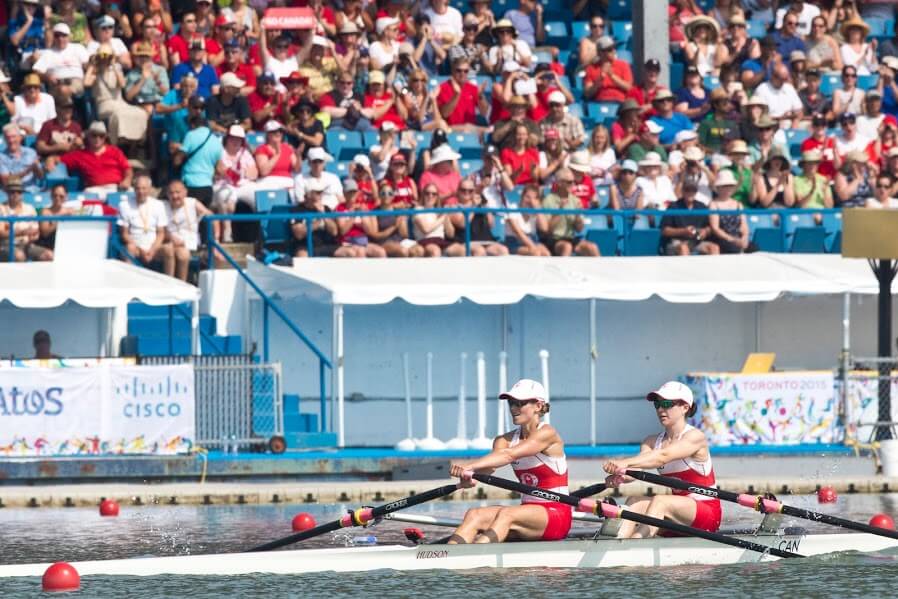
HUDSON boat used at the Pan Am Games
Javelin Technologies customer HUDSON Boat Works continues to impress with its commitment to creative 3D design and its winning ways on a world stage.
HUDSON, based in London, Ontario, is a manufacturer of Olympic class rowing shells and a leader in developing racing hull shapes, carbon composite construction, and original components to advance the sport.
Since 1984, HUDSON boats have won more than 80 medals at the Olympics and World Rowing Championships; this summer, Pan Am athletes, most of them Canadian, won 11 medals in HUDSON boats. Canadian men and women competing in events from singles to eights won seven gold medals and two bronze medals. U.S.A. and Chile each took a bronze in a HUDSON shell.
Craig McAllister is Commercial Manager for HUDSON. He says 39% of the boats raced during the games were HUDSON and that half of the gold medals were won in a HUDSON.
“Success at international events like the Pan Am Games is rewarding and inspiring when you think about the thousands of hours invested behind the scenes by our highly skilled engineering and manufacturing teams. It validates that we have become an industry leader. We do that by embracing innovation and supporting transformational ideas.”
Nine of the 14 nations competing in Pan Am rowing had at least one entry in a Hudson, including Canada, U.S.A., Cuba, Brazil, Chile, Paraguay, Venezuela, Guatemala, and El Salvador.
It’s a big deal
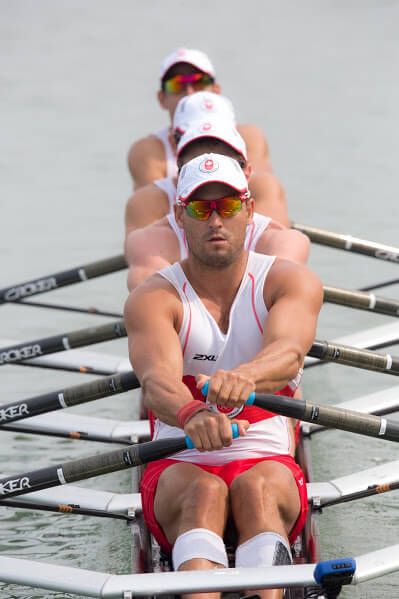
The Toronto Pan Am games marked just one of the highlights of 2015 for the HUDSON crew. The year began with a promise to build 77 rowing shells for Community Rowing Inc., based in Boston. It’s a not-for-profit program that makes rowing more accessible to people from all demographic backgrounds, especially the inner city youth of Boston. As the single largest boat order in the history of the industry, it infused a lot of energy and dollars into the business and provided a serious boost in HUDSON’s profile and status in the United States.
“When we delivered all the boats by the due dates, the U.S. market saw that as a stamp of approval,” Craig says. “Several new orders have referenced the CRI deal. Our ability to follow through on that contract validated our credibility.”
Graham Cartwright, HUDSON’s engineering manager, reports that not only did HUDSON have to deliver a lot of boats on a strict delivery schedule, the team had to quickly design, analyze, test, and produce custom components created specifically for CRI. That’s because CRI boats are used by a diverse group of athletes – in age, size, and experience level. Greater-than-usual adjustability was needed to correctly rig the boats for different users.
“We designed the components in SOLIDWORKS, analyzed them structurally using the Finite Element Analysis tools, and incorporated them into our assembly models to ensure accurate fit.”
How to stand out in the industry
There’s no sitting around basking in success over at HUDSON. Half a dozen people are dedicated full time to improving designs and systems, pushing limits, and bringing ideas to life.
One such project is a partnership with Fanshawe College, also in London. What started as a student project is close to being a physical reality; it’s the first boat test stand in the world that can test stiffness both longitudinally and torsionally, allowing boat-to-boat comparisons. Rowers will be able to understand how their boat compares to norms, whether it’s a new or used (and potentially fatigued) shell.
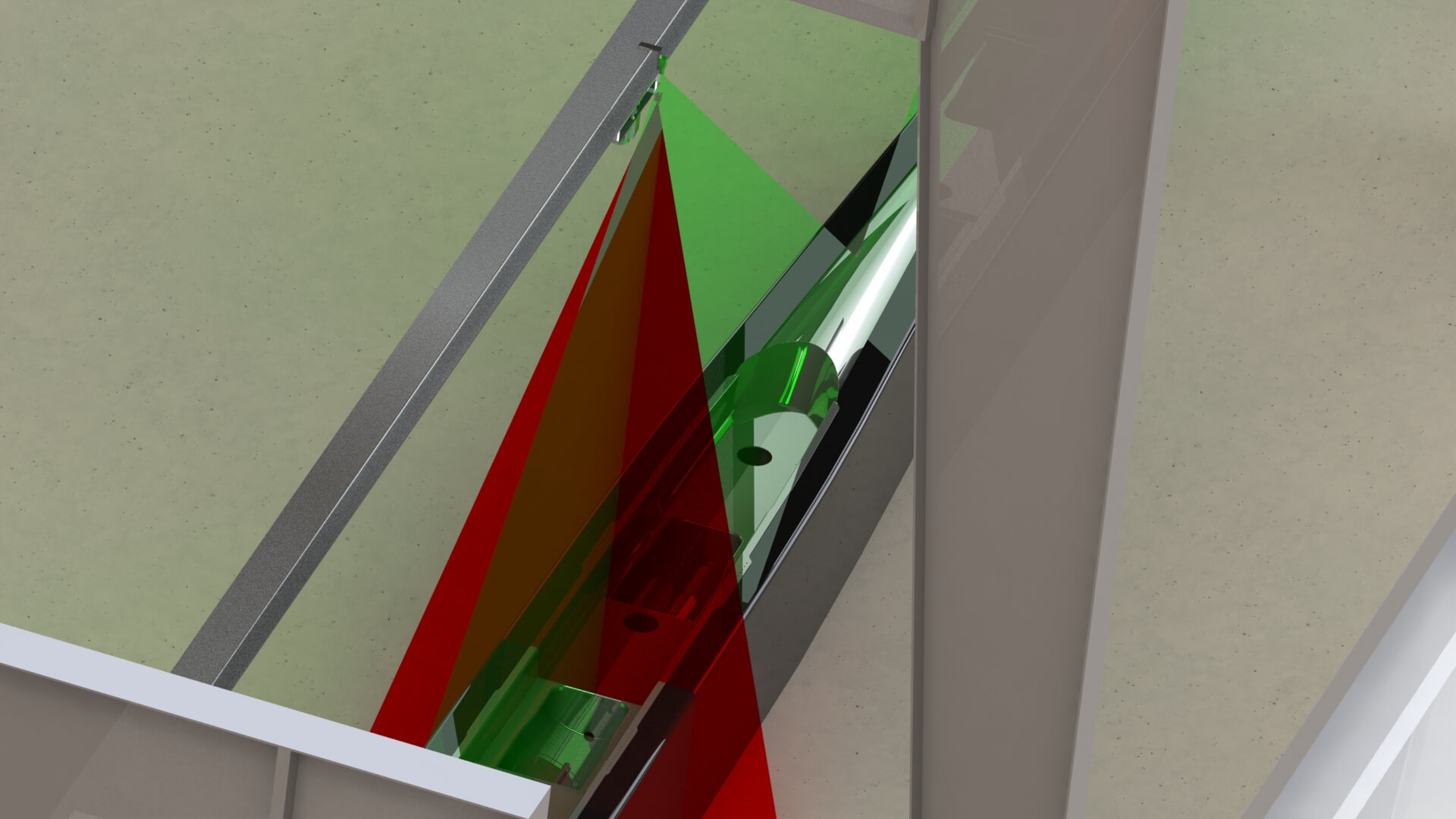
HUDSON Boat Works design in SOLIDWORKS
The entire stand assembly was designed in SolidWorks. Graham says that because Fanshawe also uses SolidWorks as a design tool, collaboration on this project was easy. “We could transfer models back and forth, so communication regarding design status and changes was effortless.”
Once the mechanical design was completed, an assembly model including all major devices (actuators, load cells, interfaces, panels, etc.) was easily created.
“That allowed us to import various boat models and test for interfaces between our product and the proposed test stand and its range of motion,” Graham explains. “We were also able to position the assembly in a building envelope model to ensure machine clearances and user access. All of this gave us the confidence we needed prior to even starting anything physical.”
With laser focus
The boat test stand gives HUDSON an edge on competitors, as does a new laser projection system designed and produced in house.
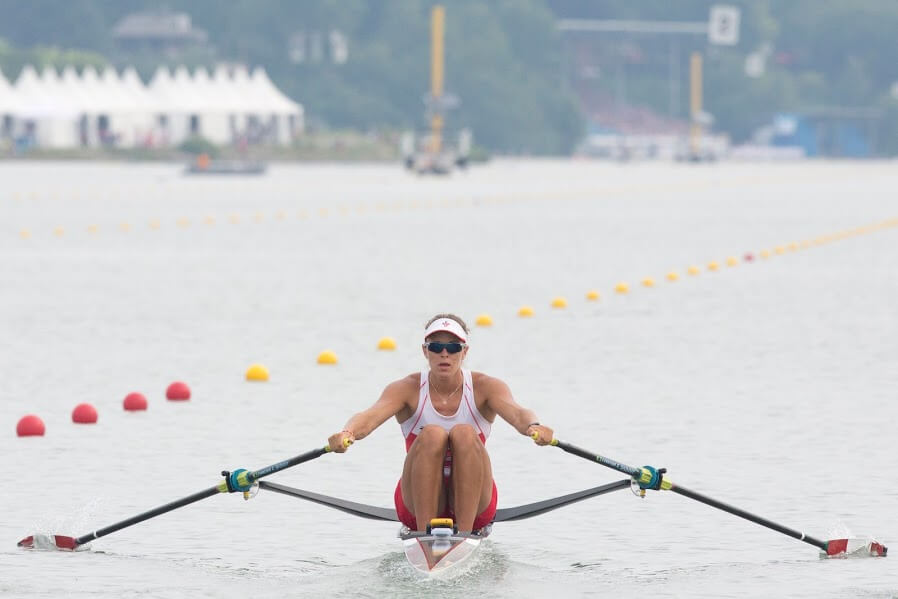
Pan Am Rower
Graham tells us that laser projection systems are available, especially in the composites industry, but that they are costly and have a number of features not necessary in HUDSON’s shop.
“SOLIDWORKS has allowed us to design our own simple laser system that works with our current production processes,” he says. “In a nut shell, we have a number of pre-cured composites components that need to be positioned and bonded accurately and consistently within the boat hull. With a 40-foot long cockpit, this requires large, cumbersome tools and fixtures which are difficult to work with and take up valuable shop space.”
The laser system consists of a main structural I-beam and moving carriages that are controlled by touch screen. Once a boat is positioned under the laser system, it can be “homed” so that laser lines mounted to these carriages project down at key positions where components need to be installed.
“SOLIDWORKS has allowed us to take an idea we had and bring it to reality,” Graham says. “We designed and assembled this idea with all its critical components ahead of time so we could be confident it would function as intended once the investment was made to build it.”
Next up – the road to Rio
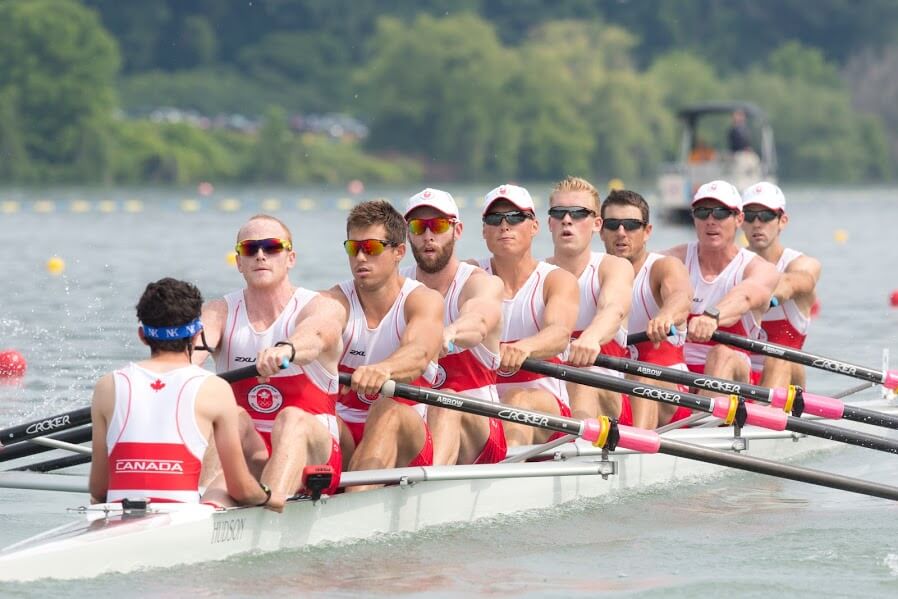
One of Canada’s Rowing Teams
In rowing, where milliseconds and millimetres matter, HUDSON will never stop analyzing and improving the hull shape. Right now they are working with a naval architect who can study the hydrodynamics of how a shell moves through water, including unsteady flow, more useful in a rowing environment than steady state testing, which is better for sail boats.
And, of course, there is the road to Rio – the 2016 summer Olympics in Brazil. With only the world’s powerhouse teams making it into the Olympic races, HUDSON will primarily support the Canadian team.
“We’re in the process of redeveloping the whole series of heavyweight men’s models, from singles to eights, trying new shapes.” Craig says. “Our job is to make sure the Canadian team has our latest and best technological advances in their boats.”
Stay tuned for updates on Hudson’s Road to Rio!
Photo Credit: Katie Steenman





